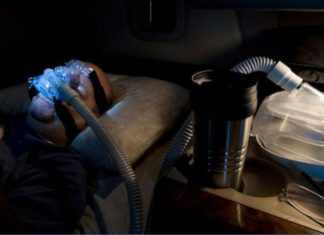All truckers has their own methods for fighting fatigue while driving, especially during long hours on the road. From the responses shared by our community, it’s clear that there are numerous strategies—some surprising, others more conventional—but all aimed at the same goal: staying awake and driving safely.
Rest
The most common piece of advice is straightforward: stop and sleep. Many drivers emphasize the importance of not fighting sleep. It’s better to take a break and have a short nap rather than risk an accident. Short naps of 15 to 30 minutes, often referred to as “power naps,” are seen as the best way to quickly recover without significantly delaying the journey. Additionally, getting a good night’s sleep and effectively managing daily stressors can naturally help prevent fatigue when it’s time to drive.
Nutrition
Managing your diet intelligently is crucial for staying awake behind the wheel. Light snacks like raw vegetables help maintain a stable energy level without causing drowsiness. Chewing sunflower seeds can also be helpful—not because of the salt, but because it provides a light distraction while supplying nutrients. Others recommend chewing gum. It’s advisable to avoid foods high in sugar and fat, as they can lead to energy spikes followed by crashes, which exacerbate drowsiness.
Music and Distractions
Music plays a vital role in keeping drivers focused. For some, a combination of AC/DC and a strong coffee does the trick. Others find that talk radio or humorous podcasts help break up the monotony of the road.
Unconventional Methods
Some drivers rely on less traditional methods. For instance, after exhausting the effects of energy drinks, some turn to extra-strong Halls lozenges, which, for reasons unknown, help them stay awake. Others suggest a shot of hot sauce for an instant wake-up call. And then there’s the more extreme method of plucking nose hairs, which one driver swears by as an effective way to stay alert!
Expert Insights
Incorporating a short walk or 10 to 15 minutes of physical activity during a break can be an excellent way to fight fatigue. This activity boosts blood circulation, bringing more oxygen to the brain and body, helping to restore energy and improve alertness. Research shows that even short periods of light exercise can significantly reduce drowsiness and promote better heart health, making it an effective strategy for staying alert and driving safely.
Conclusion
No matter the method used, it’s clear that sufficient and regular sleep remains the best way to avoid the dangers of fatigue while driving. As one driver put it: “Sleep is not something to compromise on; if I’m tired, I pull over.” Safety should always come first, and every driver should find the method that works best for them to stay alert on the road.
Read more :
















